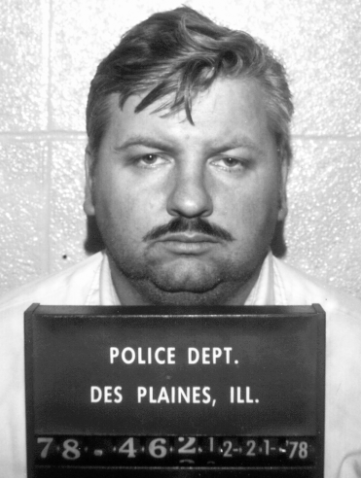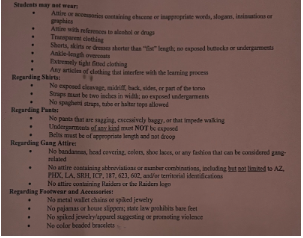John Wayne Gacy’s Atrocious Crimes and the Students that Love it Anyway

March 7, 2023
John Wayne Gacy, also known as the “Killer Clown” and “Pogo the Clown”, is one of the most infamous serial killers in America. He grew his popularity by committing atrocious crimes that includes raping, torturing, and murdering at least 33 young men and boys in the 1970’s.
Growing up, Gacy exhibited a growing tendency towards sadism, the impulse to inflict pain or humiliation on others, which resulted in many encounters with the law in the 1960’s. Gacy performed his crimes inside his home in Norwood, Illinois, a small suburb in Chicago. He would lure his victims into his home and proceed to torture and sexually assault his captives. He would then murder them by strangulation with a garrote, a vile weapon placed on a victims neck and tightened by a screw until they are unconscious. Twenty six of his victims were buried inside the home and three others were buried somewhere else on the property. The last four were disposed of in the Des Plaines River. The future serial killer was first arrested in 1968 for the sexual assault of a teenage boy. When he was arrested, he denied the charges and demanded to take a polygraph test. The results of the test were “indicative deception” when Gacy denied any misconduct to the boy. After Gacy pleaded guilty for his heinous crimes, a jury indicted him. He was released on parole and only served 18 months of a 10 year sentence. His victims included people he knew and random individuals he lured from off the streets with an offer of drugs or alcohol. Some of his victims were taken by force, while some were conned into believing Gacy was a policeman because of his counterfeit sheriff’s badge. Inside Gacy’s home, he drank and did drugs with his victims to gain their trust. He would then reveal a pair of handcuffs to his intended victim to show them a magic trick. With his victims unable to free themselves, Gacy told them that the trick was to get the key to the handcuffs. While his victims were restrained, he proceeded to sexually assault and torture them. He also taunted his victims verbally throughout their abuse. After their deaths, he typically kept his victim’s bodies under his bed for 24 hours before burying them in a crawl space under his home.
On Dec. 11, 1978, 15 year old Robert Priest went missing. It was reported to authorities that he was last seen with his mother at a drugstore where he worked. Ten days later, a police search of Gacy’s home revealed evidence of his involvement in numerous crimes, including the disappearance of Robert Priest. After a long period of police surveillance and investigation, Gacy finally admitted to killing over 30 men and boys, and he was arrested. His trial began on Feb. 6, 1980. Because he had already confessed to the murders, the main arguments were focused on whether he could be declared insane and sentenced to a mental facility. Gacy told the authorities that the crimes were committed by an alternate personality. After a jury’s deliberation, he was found guilty of 33 murders, and he became one of the most ruthless serial killers of America. He was sentenced to death. Gacy was imprisoned for almost a decade and a half while trying to appeal his death sentence. He attempted to proclaim his innocence on various occasions but failed. On May 10, 1994, John Wayne Gacy was executed by lethal injection at Stateville Correctional Center. His house and all structures on the property were demolished. According to one of the workers involved in the demolition of Gacy’s house, “If the devil is alive, he lived here”.
The popularity of true crime movies, tv shows, and podcasts have infatuated many young people. The cultural focus on true crime may be negatively impacting them. To some people, true crime influences young people to become like the criminals that the media may be glorifying. For others, it is fascinating to delve into the mind of a serial killer for educational and entertainment purposes. “I like true crime because I like hearing the stories of different killers like their upbringing and their reasoning for killing,” said Kamryn Tumbleson, student at Thunderbird High School. Students enjoy true crime because they’d like to get an insight inside a killer’s brain for their real killing. They are obsessed with serial killers because they want to know what makes people kill people, why murder happens, and how people go missing. True crime provides people with a sense of excitement and suspense, it gives people a better understanding of the criminal justice system, and it also makes people more vigilant and safety-conscious. This is why serial killers like John Wayne Gacy’s popularity will never go away.









































Kamryn • Mar 7, 2023 at 12:14 pm
This is so amazing! Cataleya is an incredibly talented writer
Chloe • Mar 7, 2023 at 11:09 am
Great article!!!
Isabel • Mar 7, 2023 at 11:07 am
Oh my that’s scary!